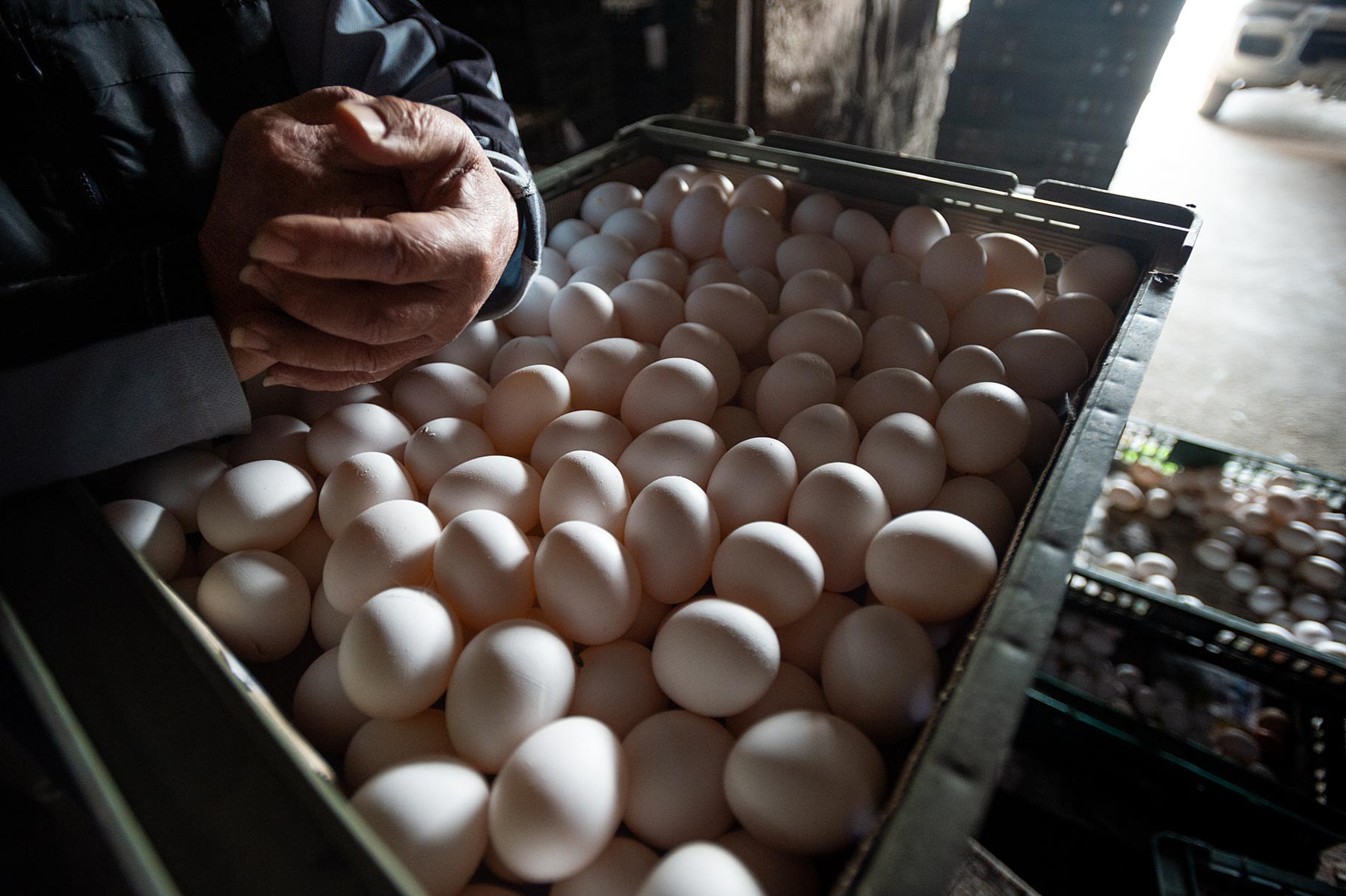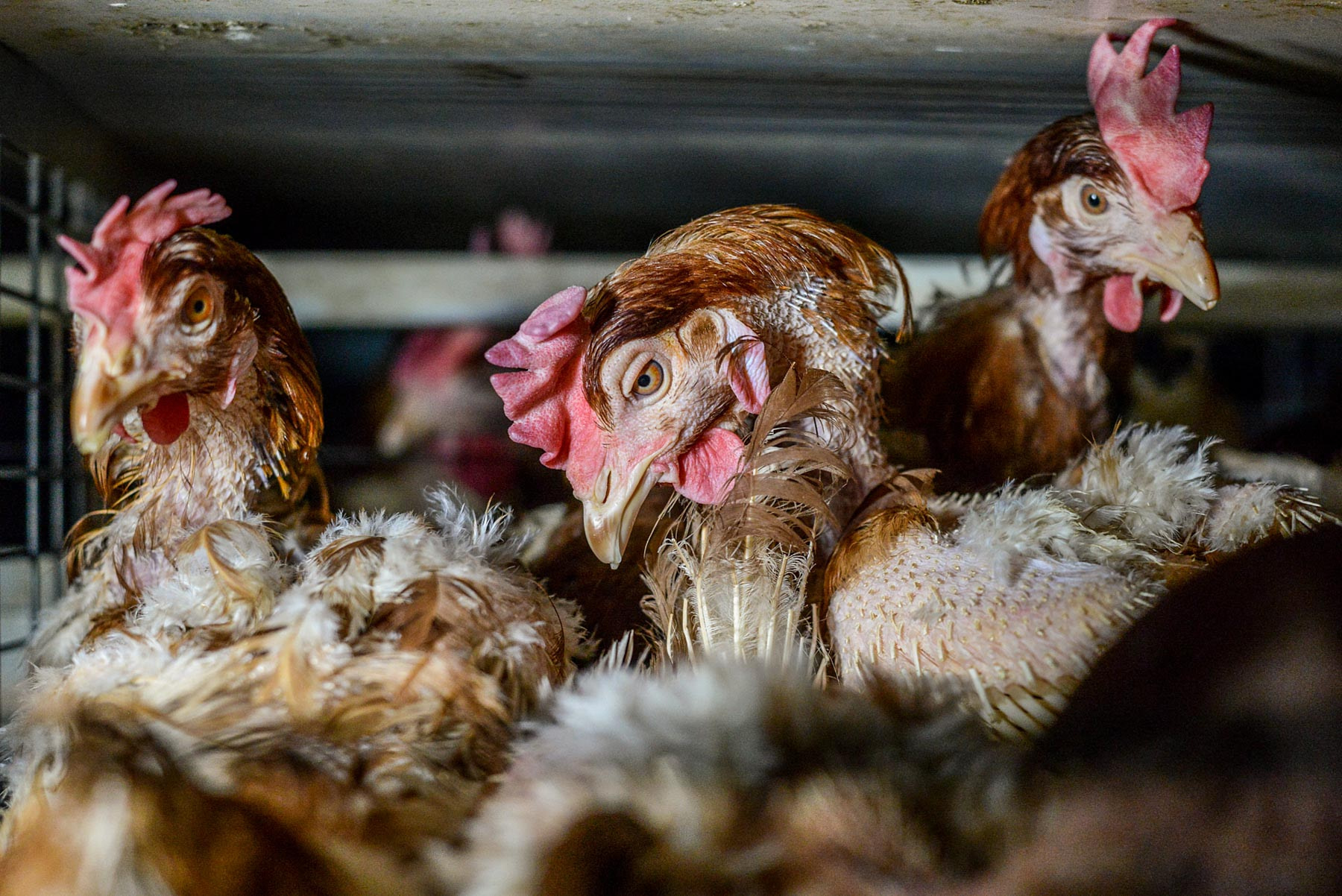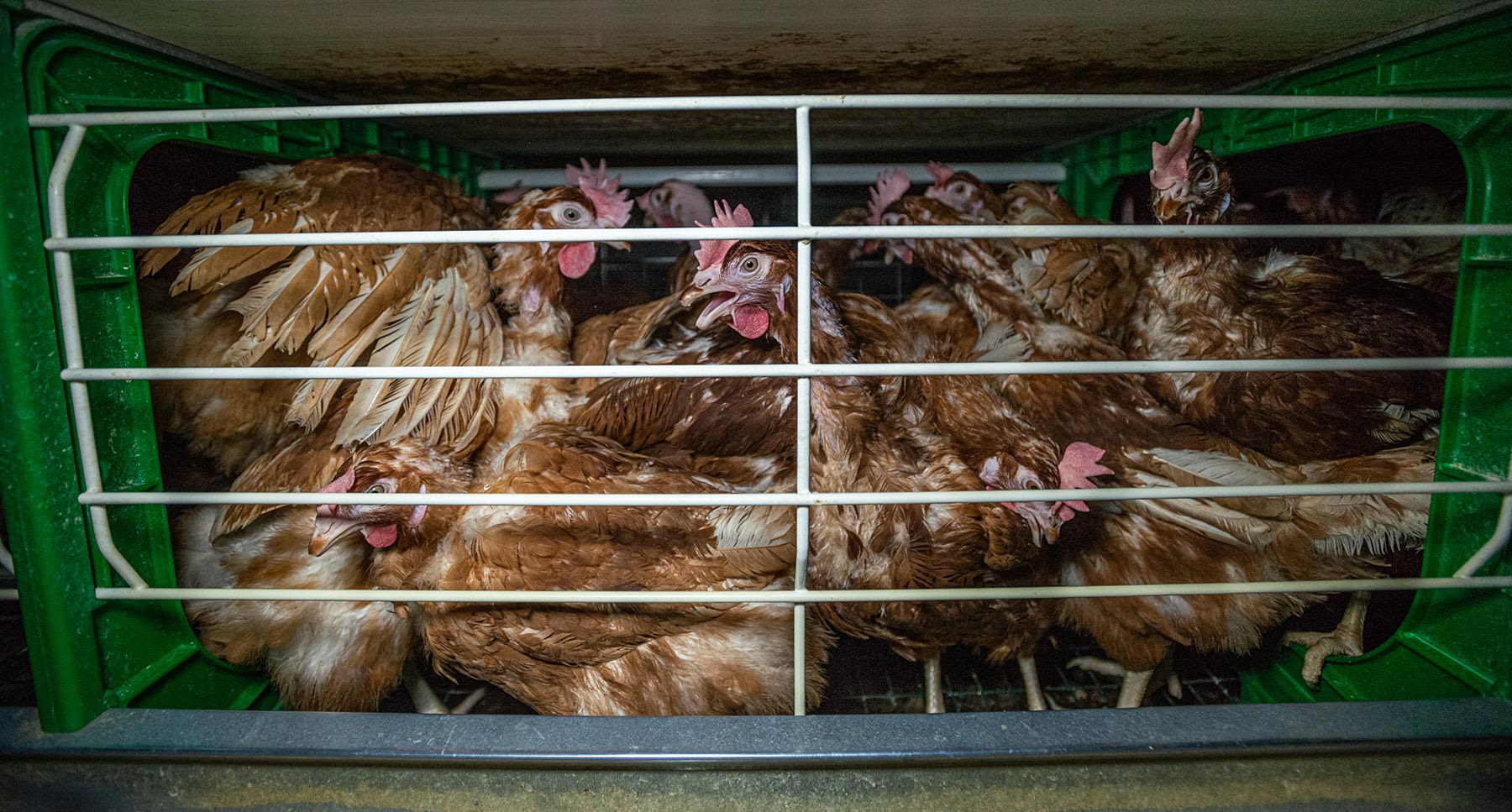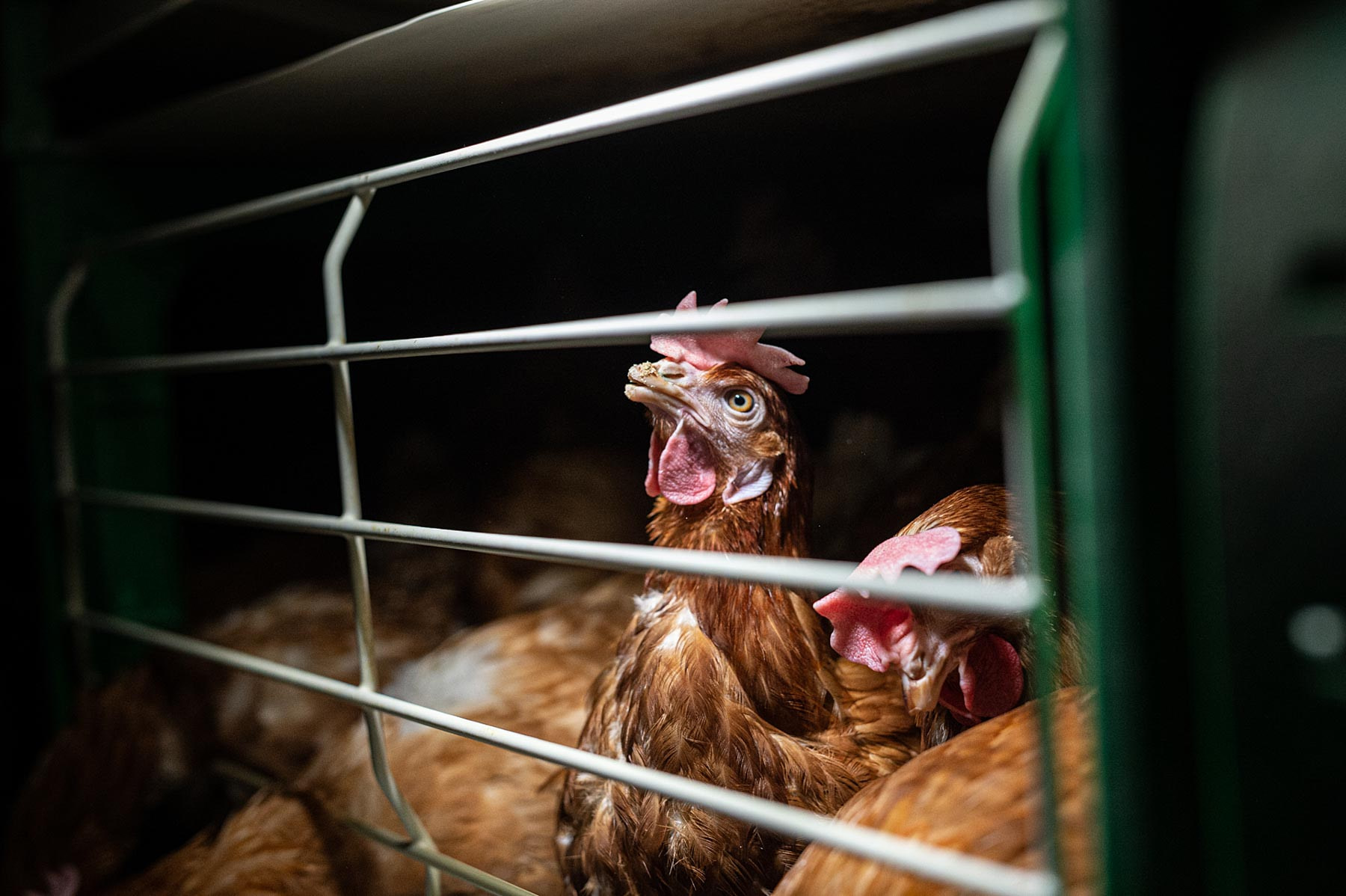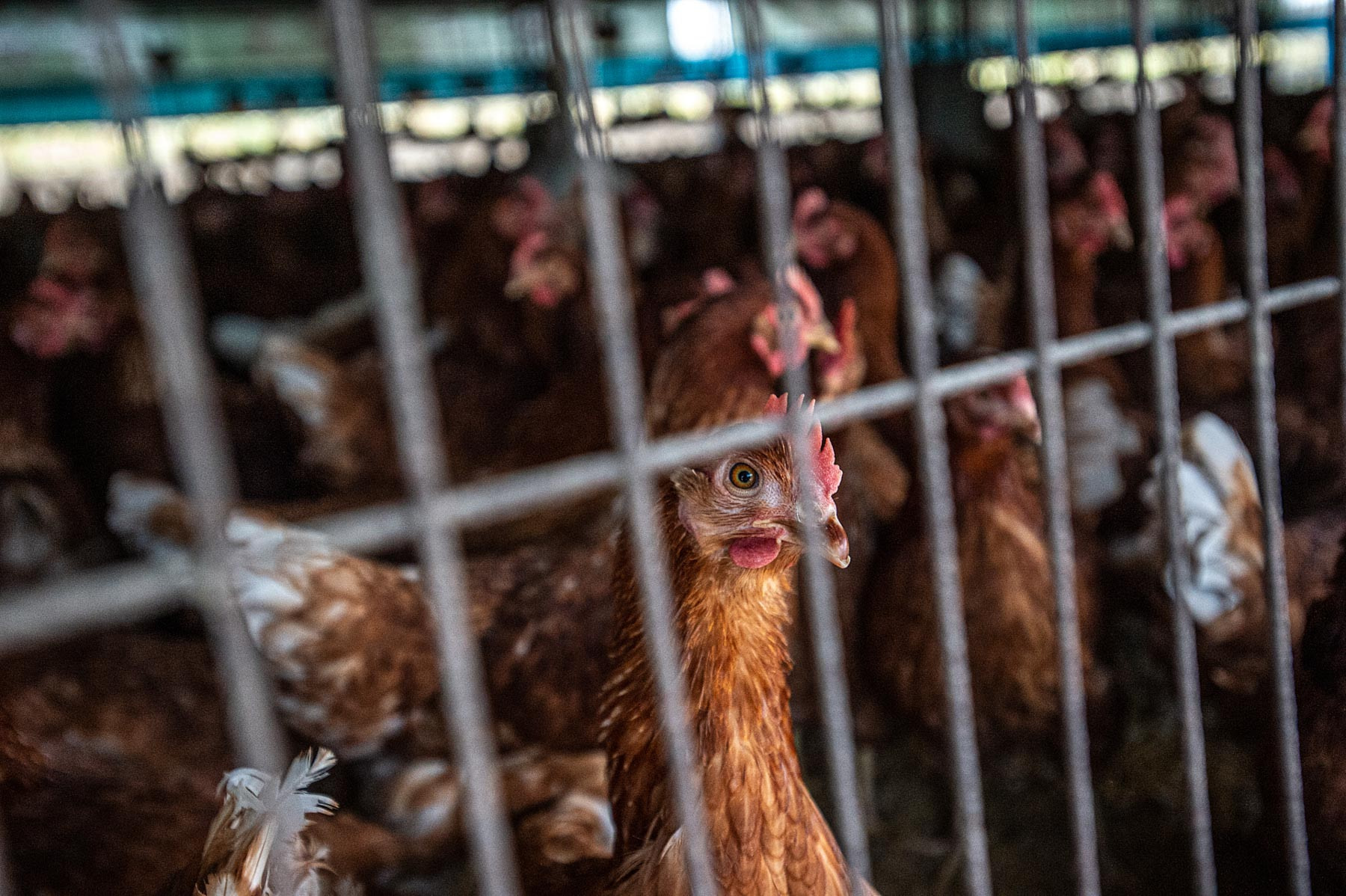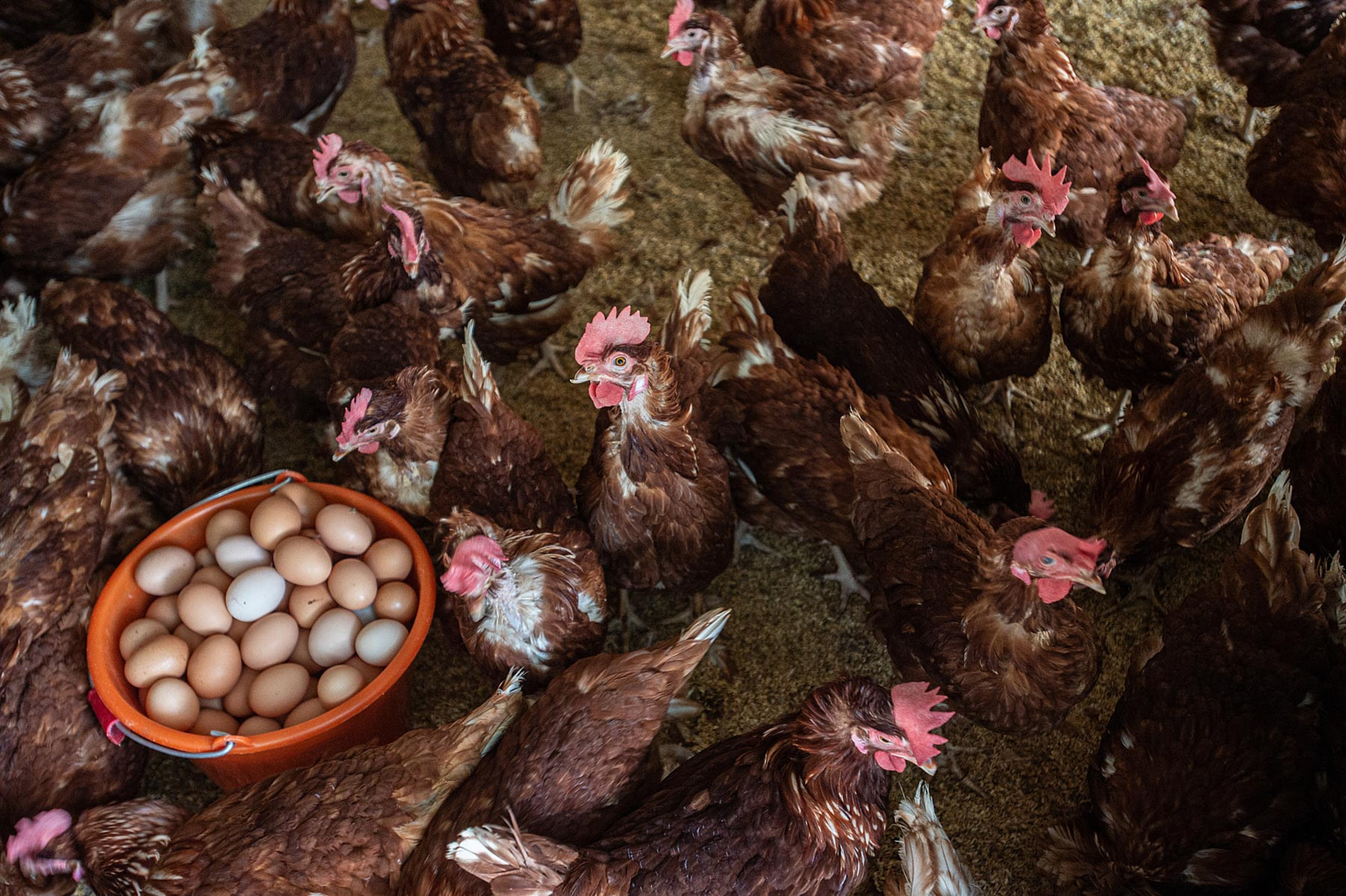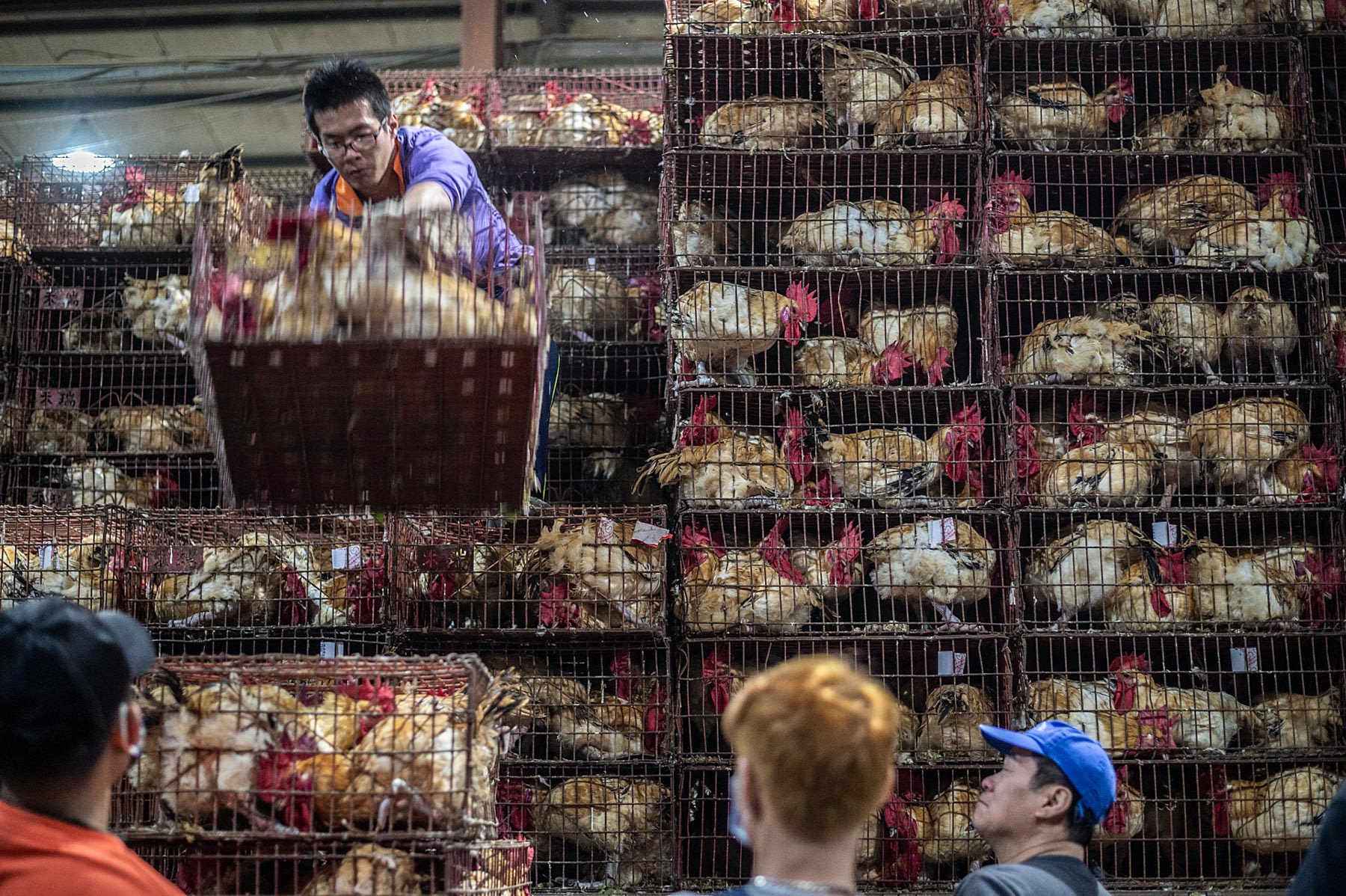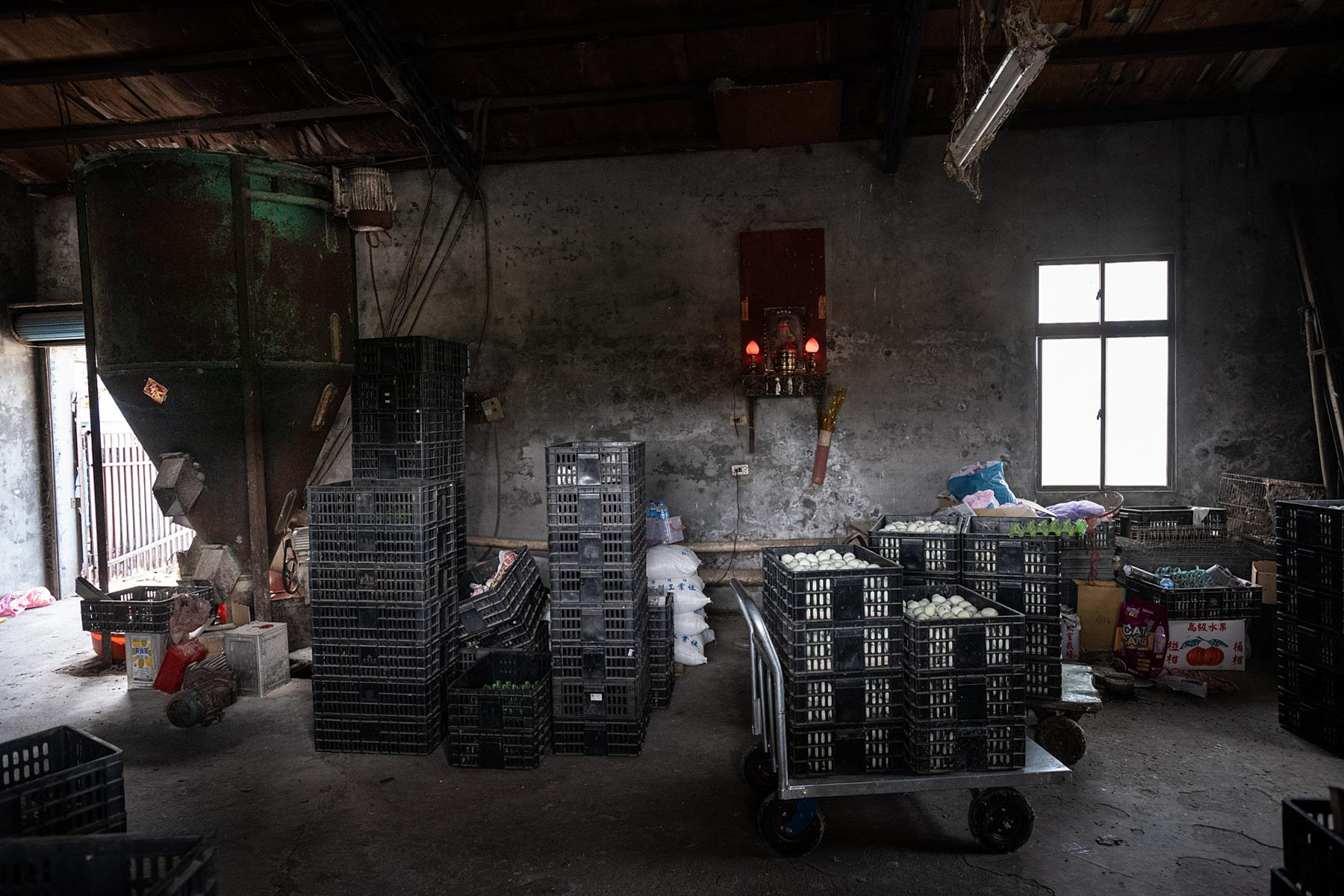A farmer with the eggs produced on his farm. Taiwan, 2019.
Jo-Anne McArthur / We Animals
Organic. Cage-free. Free-range. Perhaps no animal industry has stamped itself with more distinguishing labels than eggs.
We face unique challenges when it comes to telling the story of an egg because the cruelties of its production exist in the man-made margins of an otherwise natural biological process. Birds do not have to be impregnated to harvest an egg, and unlike in the meat and dairy industries, no animal needs to be killed or separated from its mother to produce an egg either. However, the conditions under which most modern chickens live are unequivocally unnatural.
In an effort to distance themselves from images of crowded, filthy battery cages, companies are increasingly labeling their eggs as “cage-free” – a now-accepted adjective of ‘excellence’ among consumers. While a select few farms might attempt to provide their egg-laying birds with somewhat ‘natural’ conditions, it’s important to remember that no matter the size of the pasture, all chicks come from the same system and are sent to slaughter when they are no longer useful.
Chickens’ long nails protrude through bottom of battery cage at industrial egg farm. Taiwan, 2019.
Kelly Guerin / We Animals
Four chickens are crammed in one battery cage at an industrial egg farm. Taiwan, 2019.
Kelly Guerin / We Animals
For the most part, the cage-free label implies green grasses and ambling chickens, no matter the degree of truth. While cage-free conditions can bring slight improvements to the egg-laying life of a chicken, no version of this pastoral snapshot would show the whole story. No amount of enrichment can compensate for what preceded and what will inevitably follow.
When chicks are hatched into this industry, a process known as sexing is used to separate future egg-laying females from males who are deemed useless to the operation. Photo and video documentation shows the predominant methods for killing these baby chicks are suffocating them in large plastic bags or dropping them alive en masse into a grinder. Statistically speaking, for every laying hen in a battery cage, barn, or even happy backyard chicken coop, there is likely a brother who had to be killed.
The reality for 95 percent of the world’s chickens is a life in battery cages, confined spaces whose footprint measures 67 square inches – an area smaller than an 8.5”x11” sheet of paper. In preparation for this life, farmers slice off the tips of each bird’s beak to minimize wounds (self-inflicted or otherwise) from nervous pecking behavior. Because these birds are unable to walk around or even lift their wings, both their muscles and bones deteriorate, and many fall ill and die beneath the feet of their cage mates. The same birds which would have naturally produced 100 eggs per year a century ago have, today, been modified to produce an annual total closer to 250.
The eggs from the remaining five percent of layer hens who do not spend the entirety of their lives in battery cages are most likely to be the ones certified as “cage-free” or “free-range.” In examining each of those terms, “cage-free” implies much more than it actually entails. While it is true that there are no cages, the reality of conditions that meet this certification are likely long, crowded and often windowless barns. The “free-range” label is perhaps even more misleading because while it stipulates that animals are given “access to the outdoors,” it does not define the parameters of that access. For many barns, it means a “pop hole” with no full-body access, a tiny amount of caged outdoor space impossible to access by most of the thousands of birds in the barn, or even a doorway to the outside (thus “access”) that is never actually opened.
Finally, regardless of how an egg-laying hen has spent her life, an industry beholden to profit inevitably takes notice that hens’ production cycles begin to slow at around one to two years of age. Whether pulled from a cage, a barn, or a pasture, the birds’ lives are cut short when they are loaded onto trucks and transported, brutally, to slaughter.
Red-feathered native chickens being unloaded from trucks at a slaughterhouse. Taipei, Taiwan, 2019.
Jo-Anne McArthur / We Animals
Disturbingly, this model for chicken egg farming is being increasingly applied to other egg-laying species, such as quail and ducks in countries like Taiwan. Ducks in these battery cages suffer a special kind of torture as they are deprived of access to swimming and bathing water, a biological necessity for their physical and mental wellbeing. Quail egg farms use the small size of the birds’ bodies to justify decreased cage heights that conveniently afford greater stacking density in their facilities.






















Farmer demonstrates conveyor belt egg collection system at quail egg farm. Taiwan, 2019.
Kelly Guerin / We Animals
Quail with head stuck through cage bars is stepped on by cage mate. Taiwan, 2019.
Kelly Guerin / We Animals
Dead ducks in a wheelbarrow at a factory farm. Victoria, Australia, 2017.
Jo-Anne McArthur / Animal Liberation NSW / We Animals
It is a perfectly natural thing for a bird to lay an egg, but there is nothing natural about the industrialized system that has co-opted this process in order to feed demand from a growing global population. In America alone, projections have shown the average person will consume approximately 289.9 eggs in 2020, compared to 248.8 in 2010, even as one-third of Americans report actively reducing their meat and dairy consumption.
The story of egg production is lengthy, far from natural, and largely unseen to those outside the industry. Behind the comforting, consumer-friendly labels exists the hyper-manipulated life cycle of a chicken that flows from selection to production then ultimately premature death. And because of this, the brutal origin story of an egg is not one that can be told in a single tragic photo from a single farm.
To view more images and video from this story, please visit our Egg Production gallery on the We Animals stock site.

